unit 4 production cost curves and revenue
1/48
There's no tags or description
Looks like no tags are added yet.
Name | Mastery | Learn | Test | Matching | Spaced |
|---|
No study sessions yet.
49 Terms
fixed, variable, total costs
fixed - costs don’t vary with output
variable - vary directly with the level of output - output increases more than costs at the start because of underutilised capital - productivity is rising - a further increase in workers means fixed FOP (land, capital) become a constraint on production, workers productivity falls - costs rise (law of diminishing returns)
total - the sum of fixed and variable costs
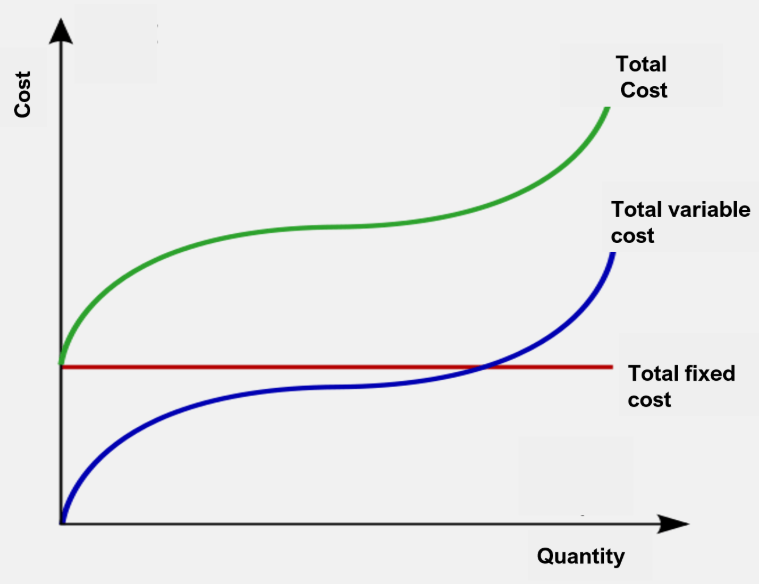
average variable and fixed costs
average - total costs divided by output
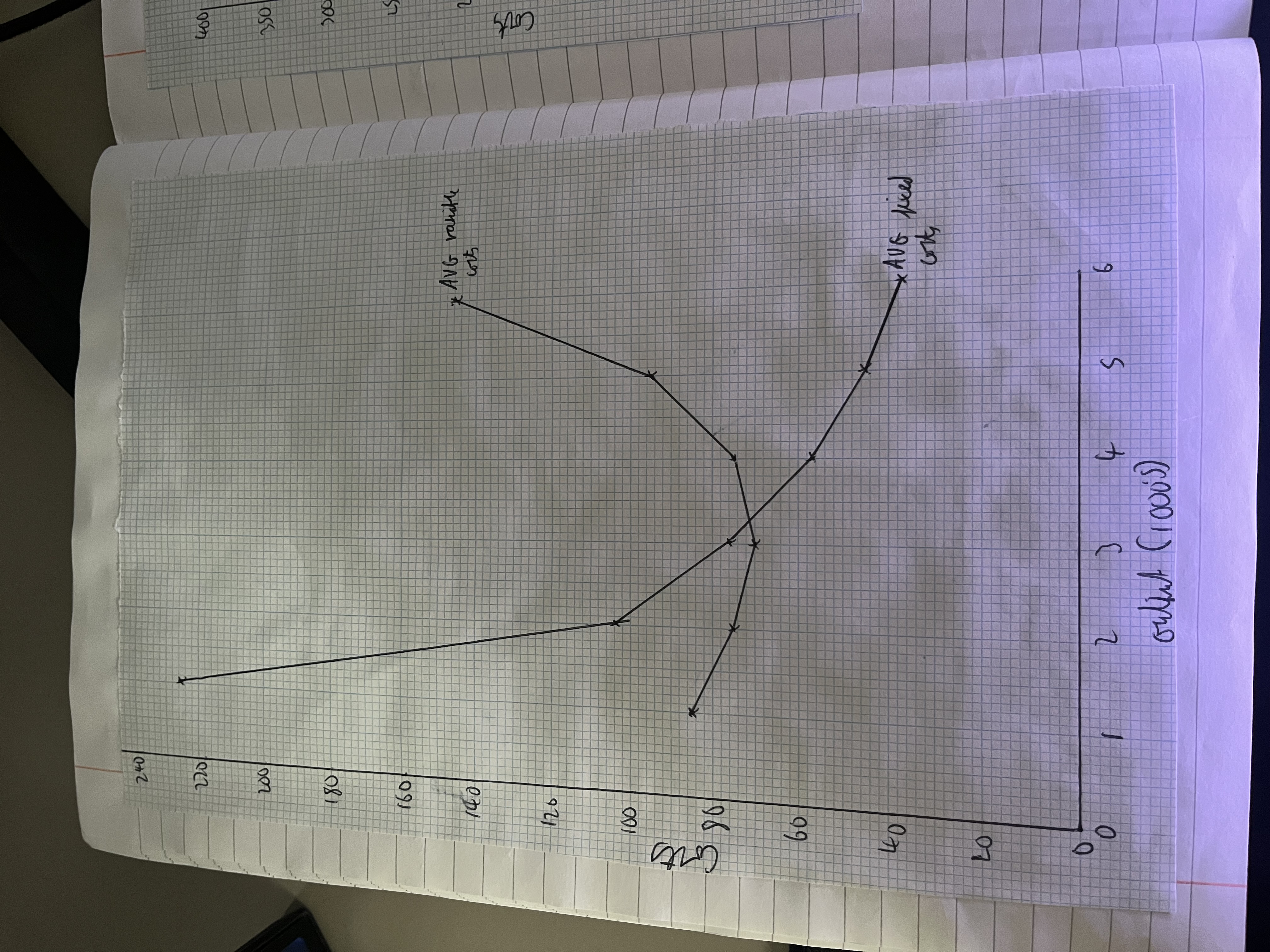
sunk costs
costs required to start up/run the firm which cant be recovered
marginal and average costs in the short run
marginal - the cost of producing 1 additional unit of output
AC = total cost / quantity
MC = change in TC / change in Q
in stage 1 there is increasing labour productivity and marginal product because of specialisation and underutilisation of fixed FOP
in stage 2 the law of diminishing returns kick in as fixed FOP become a constraint on production so labour productivity and marginal product falls
marginal cost rise
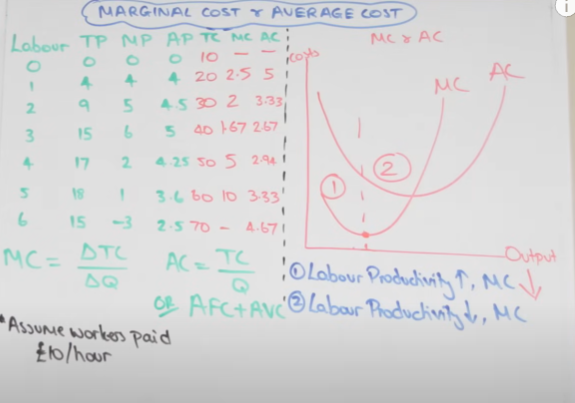
labour productivity
measures outpour per worker
total outpour / units of labour
capital productivity
measures output per capital
total output / units of output per capital
specialisation
the concentration of production on a narrow range of goods and services
advantages of specialisation
higher output - efficient use of resources - trade increases - growth increases - better living standards - more jobs
wider range of goods and services - within a narrow focus, firms produce a wide range of products
allocative efficiency - resources go to the firms / country’s that are the most efficient at producing
higher productivity - workers become more skilled band are used to their maximum productive potential
lowers unit cost - passed onto consumers
quality improvements
issues with specialisation
finite resources
overspecialised firms or country’s can become over reliant on certain resources
what if other firms become more efficient at producing that good
what if fashion or trends change
de-industrialisation
if another firm is more efficient - the other firm will shut down
national interdependence
international issues can block trade and stop the benefits of specialisation
division of labour
the separation of a work process into a number of tasks , with each task preformed by a separate version or worker, allowing for increased efficiency and specialisation
advantages of division of labour
high productivity
workers preform the same task - lower cost of production - lower costs - output maximised - lower prices - high profits
capital can improve productivity
lower prices, high quality and choice
problems with division of labour
preforming the same task can demotivate workers - lower productivity
high employee turnover
workers are at risk of long term unemployment is technology advances
highly standardised goods and services
short run
at least 1 FOP is fixed
long run
all FOP are variable
law of diminishing returns
effects firms in the short run
when variable factors of production are added to a stock of fixed factors of production, total / marginal product will initially rise then fall
stage 1 - increasing returns to labour - marginal product is rising
why, labour productivity is rising
specialisation
under utilisation of fixed FOP
stage 2 - law of diminishing marginal returns sets in - marginal product falls
why, labour productivity decreases
fixed FOP become a constraint on production
not enough FOP
TP is maximised when marginal product is 0
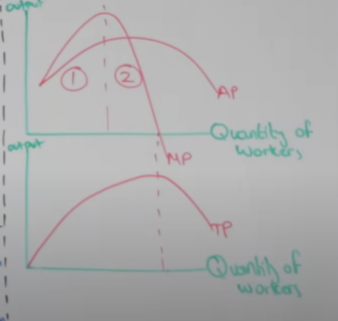
marginal product
change in total product / change in Q of workers
average product
total product / Q of workers
increasing returns to scale
an increase in all factors of production causes returns (output) to increase proportionally more
50% increase in FOP causes a 100% increase in output
constant return to scale
the increase in FOP causes an equal proportional increase in output
decreasing returns to scale
an increase in all factors of production leads to a less than proportional increase in output
LRAC - returns to scale
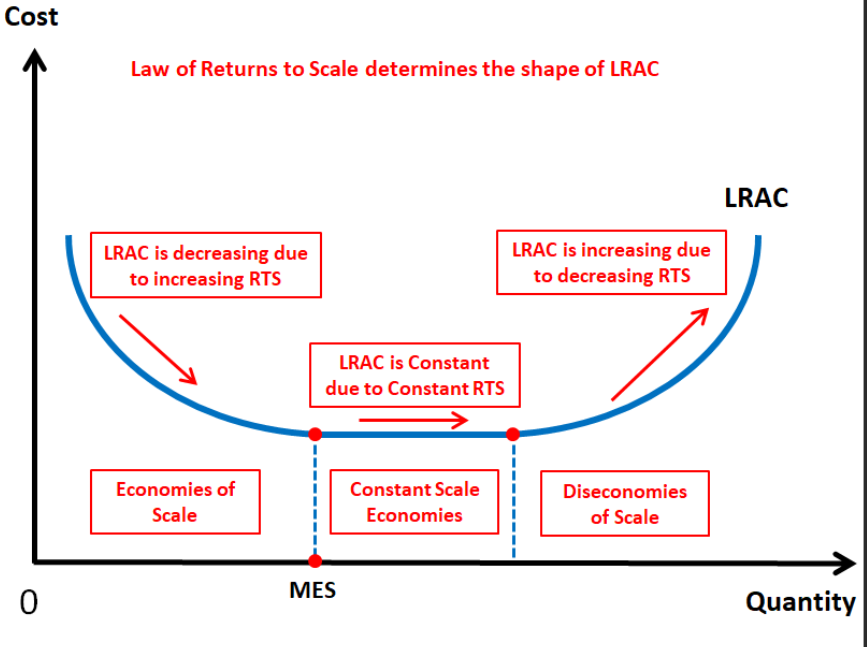
economies of scale
falling long run average costs as output increases
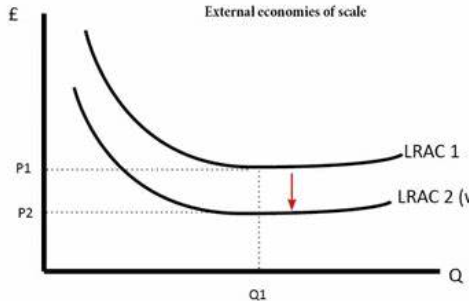
minimum efficient scale
lowest level of output required to fully exploit economies of scale and the firm achieves productive efficiency
internal economies of scale
arise from the increased output of the business itself leading to lower avg costs - spread costs over a wider range of output
financial - banks lend at lower interest rates - less risk
managerial - as a firm gets larger they can employ specialist managers - increase in productivity - higher output
technical - specialist machinery boosts productivity
marketing - discount on advertising - bulk buying
purchasing - firms can bulk buy as they grow - discount
external economies of scale
occur within an industry, all firms benefit
better transport infrastructure
component suppliers move closer
R and D firms move closer
agglomeration
the clustering of businesses in a specific area to share resources and benefit from shared infrastructure, leading to lower costs and improved efficiency
diseconomies of scale
an increase in LRAC as output increases - total costs rise faster than output
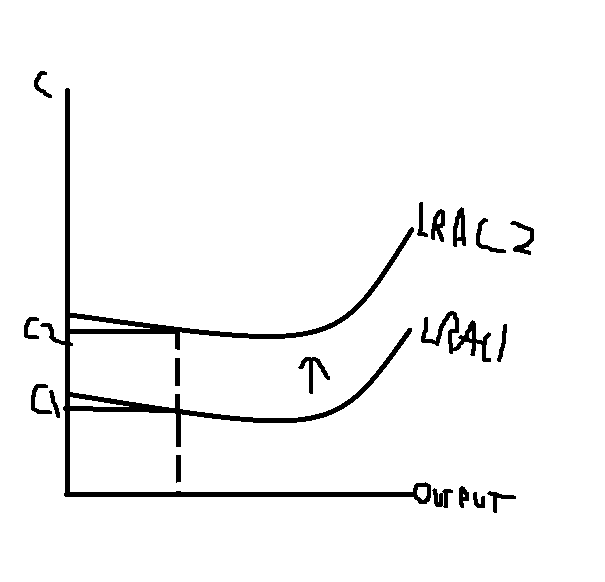
internal diseconomies of scale
control - harder to manage - lower productivity
communication - harder to spread messages through the company - lower productivity
coordination - difficult to coordinate different parts of the business
motivation - each worker feels less valued as the business grows reducing motivation and productivity
external diseconomies of scale
increased demand for raw materials - price rises - costs rise
local labour becomes scarce - increased demand - wages rise
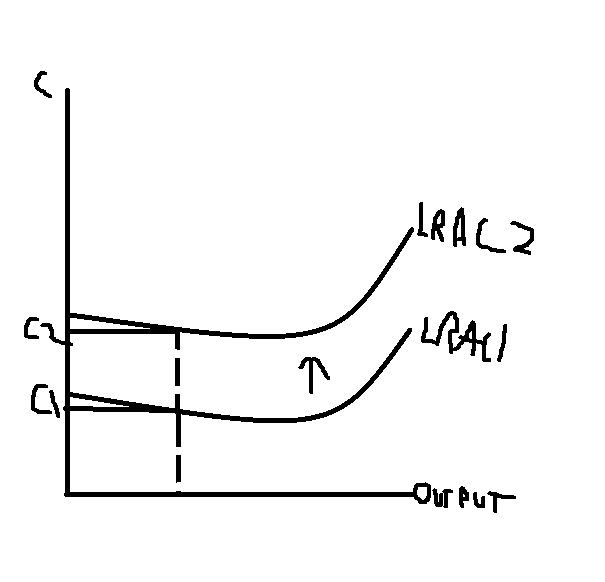
revenue
income generated from sales of goods or services
average revenue = price per unit
total revenue / output
marginal revenue
the change in revenue from selling one extra unit of output
total revenue
price per unit X quantity
revenue curve in perfect competition
price takers - all units sold at the same price
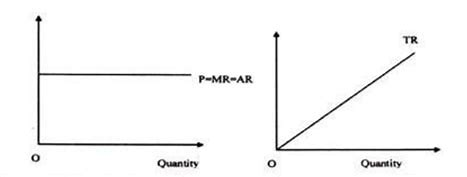
revenue curve in imperfect competition
price makers - different prices being charged by the firm
governed by law of demand
high price = low quantity
low price = high quantity
MR twice as steep at AR
when a firm drops its price, it drops it price on all units sold not just units sold beforehand, so MR drops faster than AR
TR is maximised when MR = 0
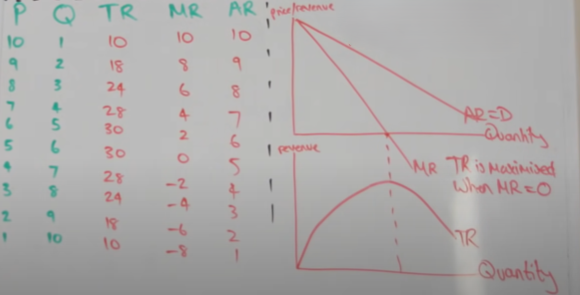
profit formula
TR - TC (explicit costs and implicit cost (opportunity cost))
supernormal profit
profit exceeding normal profit, typically occurring when total revenue exceeds total costs, including both explicit and implicit costs
AR > AC
normal profit
minimum level of profit required to keep FOP in their current use
AR = AC
subnormal profit
profit that is below normal profit, occurring when total revenue is less than total costs, indicating the firm is not covering all opportunity costs and is incurring an economic loss
AC > AR
economic profit
the difference between total revenue and total costs, including both explicit and implicit costs, indicating the firm's ability to cover all opportunity costs and earn a return on investment
invention
creation of a new idea without it necessarily becoming a commercial reailty
innovation
transforming an invention into commercial reality
create destruction
process by which existing products or services are replaced by new and improved ones, leading to changes in market dynamics and often resulting in the obsolescence of older technologies or business models
methods of production with technological change
can lead to more capital intensive production
machines replacing labour
can lead to more labour intensive production
need to operate capital
technological change
the overall advancement in technology that enhances production efficiency and alters methods of production
technological advancements affect on cost of production
LRAC fall
specialist capital can be brought it
division of labour - increases efficiency and reduces unit costs
MES takes place at a greater level of output as EOS are being exploited more with improvements in technology
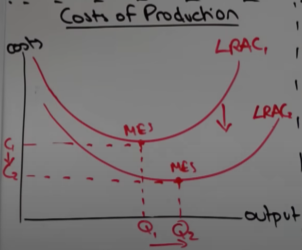
can improvements in technology improve efficiency
productive - costs of production are lower
allocative - lower costs passed on as lower prices
dynamic - innovation
technological improvements effects on market structures
lower barriers to entry
number of firms - more if there are lower barriers to entry - more competitive outcomes
if barriers increase could lead to a monopoly
less homogenous goods - more choice
more knowledge for consumers and producers
MC connection with supply curve
Profit-Maximizing Rule
A competitive firm maximizes profit where P=MC
This condition ensures the firm supplies the quantity where its cost of producing the last unit equals the market price
Shut-Down Condition
In the short run, the firm will only supply output if the price is at least as high as average variable cost
So, the firm's short-run supply curve is the portion of the MC curve that lies above the AVC curve
Long-Run Supply
In the long run, the firm must cover all costs, including fixed costs. The supply curve becomes the portion of the MC curve that lies above the average total cost (ATC) curve